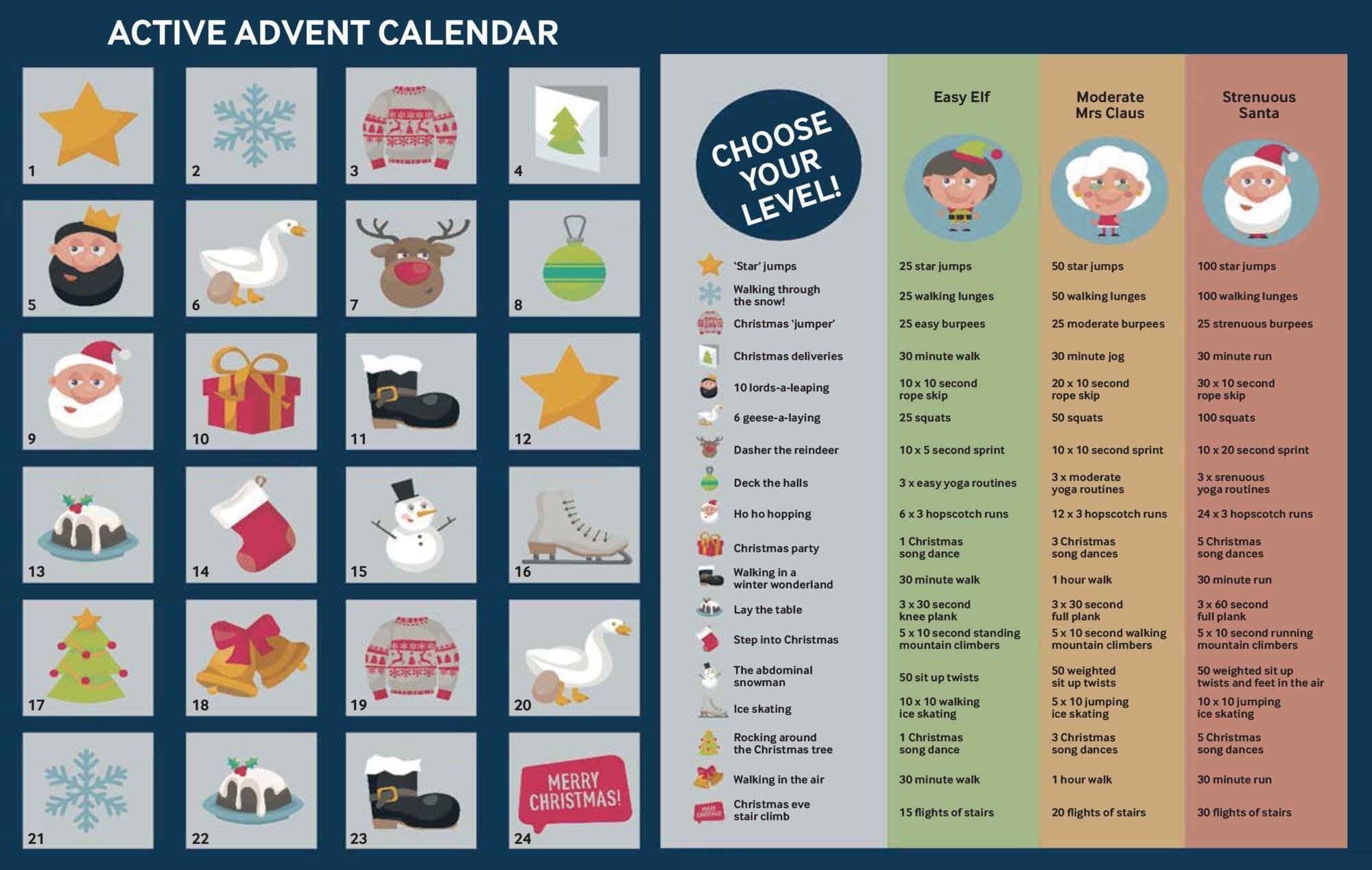Published on
Updated
Reading 2 mins.
Do you associate the Advent calendar with chocolate? Forget all that! A study published in the Christmas issue of the British Medical Journal touts daily physical activity instead. An approach that seems to work to increase physical activity and reduce sedentary time in inactive adults!
Advent calendars are available more and more: beyond the traditional chocolate, there are Advent calendars for children containing toys and beauty products for adults. And why not exploit the idea to play sports?
Betting on sport at Christmas time
With the cold, the holidays and the rich festive meals, the Christmas period is more conducive to weight gain than to sports. Moreover, studies have already shown that people take between 400 and 900 grams at this time of the year.
Based on this finding, researchers at Loughborough University conducted a pilot study to test the effects of a Christmas-themed physical activity intervention during Advent to increase physical activity levels. and reduce the sedentary time of volunteers.
Emails offering daily exercises
The researchers therefore recruited 107 inactive adults, most of whom were Caucasian women, middle-aged (46 years old). In addition, half were overweight or obese. They were divided into two groups.
Every day during Advent, from December 1 to 24, 2021, participants received an email inviting them to perform a Christmas-themed physical activity. Each idea was offered at three levels of intensity: low intensity, moderate intensity and high intensity. Participants were free to choose the level of intensity of their physical activity each day.
An online questionnaire to collect responses
All participants then used an online questionnaire to indicate how many minutes they spent doing moderate-to-vigorous intensity physical activity per week and how many days they did muscle-strengthening exercises per week.
About half of the participants in both groups were asked to wear an accelerometer (a gadget that tracks the volume and intensity of physical activity) on their wrist around the clock for the duration of the study.

Participants become more athletic!
On average, the groups reported a similar amount of time participating in moderate-to-vigorous intensity physical activity in weeks one and two. By week three, the intervention group reported participating in about 21 additional minutes of moderate-to-vigorous-intensity physical activity per week and just over half a day of muscle-strengthening exercise more per week. week than the control group.
Become more active during the holidays
For the authors of this work, their work is “a brief intervention that generated relatively small changes in behavior“. However, they note, “the intervention was safe, inexpensive and designed to be easily scaled up” and scientists believe that she”may have the potential to change longer-term health behaviors“. According to them, “the enjoyment and adherence to the intervention shows that the public would welcome public health campaigns to help them become more active during the holiday season“.
